
Wassily Kandinsky Painting Reproductions 1 of 7
1866-1944
Russian Expressionist Painter
He was born in Moscow on December 4 (December 16, New Style) 1866, into a family whose genealogy read like a map of the Russian empire’s borders: a Muscovite mother, a father from Kyakhta near China, a great-grandmother reputedly a Mongolian princess. This mixed heritage mattered less as romantic myth than as an early lesson that cultures could overlap and refract one another. Childhood journeys to Venice, Rome, Florence, the Caucasus, and the Crimea gave him a cosmopolitan eye before adolescence had fixed his tastes. In Odessa from 1871, he learned piano and cello, handling sound with the same intensity he would later attribute to colour, which for him had “a mysterious life of its own.”
In 1886 he chose law and economics at the University of Moscow, dutifully pursuing a profession that seemed more permissible in Russian society than art. Yet the city’s chromatic architecture and its icon collections pressed on his imagination. An ethnographic mission to Vologda in 1889 exposed him to folk art whose stylizations liberated form from perspective and naturalism. In St. Petersburg he confronted Rembrandt, in Paris the latest salons. By 1893 he had a doctoral-level degree, but the compromise of directing a photographic section at a printing establishment could not silence his conviction. When a professorship at Dorpat beckoned in 1896, he chose instead the uncertain path to Munich, calling it his “now or never” moment.
Munich offered anonymity and discipline. He studied with Anton Azbé, then with Franz von Stuck at the Academy, earning a diploma in 1900. His public face - tall, impeccably dressed, pince-nez poised - gave him the air of a diplomat or scientist. The paintings of these years tested Impressionism, Jugendstil’s sinuous lines, Neo-Impressionist dots, and the saturated chromatics of Expressionism and Fauvism. He showed with the Phalanx group (presiding over it from 1902), the Berlin Sezession, the Paris Salons, and Die Brücke in Dresden. Between 1903 and 1908 he traveled constantly, from Holland to Tunisia, absorbing atmospheres and palettes, always returning to experiment with what he had seen.
In 1909, with Gabriele Münter, his companion since 1902, he bought a house in Murnau, where alpine light fractured forms into planes of burning colour. There he pursued a language in which line and hue could operate free from the obligation to resemble. He was never a hedonist of paint alone, nor an advocate of art as decorative self-sufficiency. He wanted a painting that could, like music, articulate immaterial states. The parallel with music was not novel, yet his insistence on constructing a visual grammar of sensations gave the analogy new urgency.
The trajectory toward abstraction was neither solitary nor uncontested. Blue Mountain (1908–09) and Landscape with Tower (1909) incline toward nonrepresentation, their imagery compressed into symbols and their compositions edging toward explosion. The oft-cited First Abstract Watercolour, dated 1910, is more accurately placed later, near Composition VII of 1913. As others dismantled representation - the Cubists, for instance - Kandinsky’s contribution was not mere precedence but a relentless argument for painting as a spiritual language. Works such as With the Black Arch (1912), Autumn II (1912), and Black Lines (1913) were executed with a slashing velocity that would echo decades later in New York studios.
Institutionally, he helped found the Neue Künstlervereinigung in 1909, then, after disputes, formed Der Blaue Reiter with Franz Marc in 1911. The catalogue and almanac they produced were less a manifesto than a statement of affinities across epochs and geographies, from folk art to children’s drawings. The group dissolved with the onset of World War I, reminding him that artistic communities do not stand outside history’s convulsions.
In 1914, as war erupted, he returned to Russia, ending his relationship with Münter. An earlier marriage to a cousin had been formally dissolved in 1910; in 1917 he married Nina Andreevskaya. The new Soviet government courted avant-garde artists, and he accepted positions that would have been unthinkable under the old regime. Between 1918 and 1921 he became professor at the Moscow Academy of Fine Arts, a member of the People’s Commissariat for Public Instruction, founder of the Institute of Artistic Culture, director of the Museum for Pictorial Culture, and a driving force behind the establishment of museums across the country. Yet as Social Realism hardened state policy, he realized the limits of his vision under the new orthodoxy and left for Berlin at the year’s end.
By 1922 he was teaching at the Bauhaus in Weimar. The school’s programme, dedicated to architecture and applied arts, did not at first encourage easel painting, yet he found an intellectual laboratory. His courses on form and colour, and his leadership of the mural workshop, synthesized pedagogy and practice. After the move to Dessau in 1925, he gained a class in free painting. His own canvases shifted toward geometric clarity without losing the tension of energised space. Punkt und Linie zu Fläche (1926) analysed the expressive temperature of points, lines, and planes - horizontal as cool, vertical as hot - extending his earlier reflections in Concerning the Spiritual in Art from colours to the grammar of drawing.
In 1933, forced out when the Nazis closed the Bauhaus, he left Germany. A German citizen since 1928, he took refuge in Paris, naturalized in 1939. Development in Brown, austere and resonant, can be read as a commentary on the brown-shirted militias. The Paris years produced paintings he called “concrete,” preferring a term that suggested built sign-systems rather than negation by abstraction. The imagery settled into biomorphic signs, half-formed organisms, eclipsed faces, and glyphs that feel like scripts awaiting decipherment. Tempered Élan (1944), among his last works, exemplifies this pictographic synthesis of the organic and the geometric.
He died in Neuilly-sur-Seine on December 13, 1944. His legacy - often absorbed through more approachable successors and adapted to diverse schools - persists as much in his writings as in his images. He insisted that painting could be more than representation and more than decoration, a disciplined arena for exploring inner necessity. That insistence, articulated across continents and regimes, remains his most persuasive biography.
In 1886 he chose law and economics at the University of Moscow, dutifully pursuing a profession that seemed more permissible in Russian society than art. Yet the city’s chromatic architecture and its icon collections pressed on his imagination. An ethnographic mission to Vologda in 1889 exposed him to folk art whose stylizations liberated form from perspective and naturalism. In St. Petersburg he confronted Rembrandt, in Paris the latest salons. By 1893 he had a doctoral-level degree, but the compromise of directing a photographic section at a printing establishment could not silence his conviction. When a professorship at Dorpat beckoned in 1896, he chose instead the uncertain path to Munich, calling it his “now or never” moment.
Munich offered anonymity and discipline. He studied with Anton Azbé, then with Franz von Stuck at the Academy, earning a diploma in 1900. His public face - tall, impeccably dressed, pince-nez poised - gave him the air of a diplomat or scientist. The paintings of these years tested Impressionism, Jugendstil’s sinuous lines, Neo-Impressionist dots, and the saturated chromatics of Expressionism and Fauvism. He showed with the Phalanx group (presiding over it from 1902), the Berlin Sezession, the Paris Salons, and Die Brücke in Dresden. Between 1903 and 1908 he traveled constantly, from Holland to Tunisia, absorbing atmospheres and palettes, always returning to experiment with what he had seen.
In 1909, with Gabriele Münter, his companion since 1902, he bought a house in Murnau, where alpine light fractured forms into planes of burning colour. There he pursued a language in which line and hue could operate free from the obligation to resemble. He was never a hedonist of paint alone, nor an advocate of art as decorative self-sufficiency. He wanted a painting that could, like music, articulate immaterial states. The parallel with music was not novel, yet his insistence on constructing a visual grammar of sensations gave the analogy new urgency.
The trajectory toward abstraction was neither solitary nor uncontested. Blue Mountain (1908–09) and Landscape with Tower (1909) incline toward nonrepresentation, their imagery compressed into symbols and their compositions edging toward explosion. The oft-cited First Abstract Watercolour, dated 1910, is more accurately placed later, near Composition VII of 1913. As others dismantled representation - the Cubists, for instance - Kandinsky’s contribution was not mere precedence but a relentless argument for painting as a spiritual language. Works such as With the Black Arch (1912), Autumn II (1912), and Black Lines (1913) were executed with a slashing velocity that would echo decades later in New York studios.
Institutionally, he helped found the Neue Künstlervereinigung in 1909, then, after disputes, formed Der Blaue Reiter with Franz Marc in 1911. The catalogue and almanac they produced were less a manifesto than a statement of affinities across epochs and geographies, from folk art to children’s drawings. The group dissolved with the onset of World War I, reminding him that artistic communities do not stand outside history’s convulsions.
In 1914, as war erupted, he returned to Russia, ending his relationship with Münter. An earlier marriage to a cousin had been formally dissolved in 1910; in 1917 he married Nina Andreevskaya. The new Soviet government courted avant-garde artists, and he accepted positions that would have been unthinkable under the old regime. Between 1918 and 1921 he became professor at the Moscow Academy of Fine Arts, a member of the People’s Commissariat for Public Instruction, founder of the Institute of Artistic Culture, director of the Museum for Pictorial Culture, and a driving force behind the establishment of museums across the country. Yet as Social Realism hardened state policy, he realized the limits of his vision under the new orthodoxy and left for Berlin at the year’s end.
By 1922 he was teaching at the Bauhaus in Weimar. The school’s programme, dedicated to architecture and applied arts, did not at first encourage easel painting, yet he found an intellectual laboratory. His courses on form and colour, and his leadership of the mural workshop, synthesized pedagogy and practice. After the move to Dessau in 1925, he gained a class in free painting. His own canvases shifted toward geometric clarity without losing the tension of energised space. Punkt und Linie zu Fläche (1926) analysed the expressive temperature of points, lines, and planes - horizontal as cool, vertical as hot - extending his earlier reflections in Concerning the Spiritual in Art from colours to the grammar of drawing.
In 1933, forced out when the Nazis closed the Bauhaus, he left Germany. A German citizen since 1928, he took refuge in Paris, naturalized in 1939. Development in Brown, austere and resonant, can be read as a commentary on the brown-shirted militias. The Paris years produced paintings he called “concrete,” preferring a term that suggested built sign-systems rather than negation by abstraction. The imagery settled into biomorphic signs, half-formed organisms, eclipsed faces, and glyphs that feel like scripts awaiting decipherment. Tempered Élan (1944), among his last works, exemplifies this pictographic synthesis of the organic and the geometric.
He died in Neuilly-sur-Seine on December 13, 1944. His legacy - often absorbed through more approachable successors and adapted to diverse schools - persists as much in his writings as in his images. He insisted that painting could be more than representation and more than decoration, a disciplined arena for exploring inner necessity. That insistence, articulated across continents and regimes, remains his most persuasive biography.
160 Kandinsky Paintings
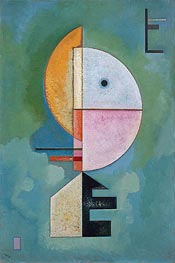
Upward 1929
Oil Painting
$842
$842
Canvas Print
$62.00
$62.00
SKU: KAW-3935
Wassily Kandinsky
Original Size: 70 x 49 cm
Solomon R. Guggenheim Museum, New York, USA
Wassily Kandinsky
Original Size: 70 x 49 cm
Solomon R. Guggenheim Museum, New York, USA

Concentric Circles 1913
Oil Painting
$1039
$1039
Paper Art Print
$58.54
$58.54
SKU: KAW-4759
Wassily Kandinsky
Original Size: unknown
Private Collection
Wassily Kandinsky
Original Size: unknown
Private Collection
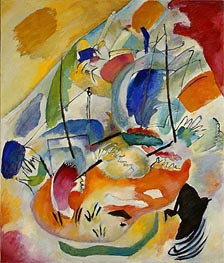
Improvisation 31 (Sea Battle) 1913
Oil Painting
$1204
$1204
Canvas Print
$79.89
$79.89
SKU: KAW-8480
Wassily Kandinsky
Original Size: 140.7 x 119.7 cm
National Gallery of Art, Washington, USA
Wassily Kandinsky
Original Size: 140.7 x 119.7 cm
National Gallery of Art, Washington, USA
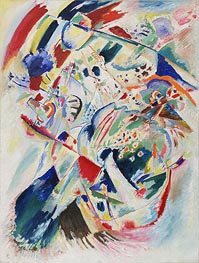
Panel for Edwin R. Campbell No. 4 1914
Oil Painting
$1204
$1204
Canvas Print
$70.69
$70.69
SKU: KAW-16077
Wassily Kandinsky
Original Size: 163 x 122.5 cm
Museum of Modern Art, New York, USA
Wassily Kandinsky
Original Size: 163 x 122.5 cm
Museum of Modern Art, New York, USA
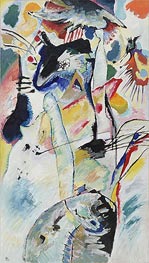
Panel for Edwin R. Campbell No. 3 1914
Oil Painting
$1068
$1068
Canvas Print
$61.81
$61.81
SKU: KAW-16078
Wassily Kandinsky
Original Size: 162.5 x 92 cm
Museum of Modern Art, New York, USA
Wassily Kandinsky
Original Size: 162.5 x 92 cm
Museum of Modern Art, New York, USA
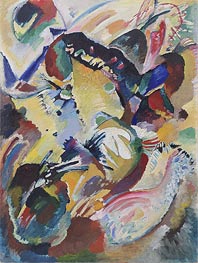
Panel for Edwin R. Campbell No. 2 1914
Oil Painting
$1201
$1201
Canvas Print
$70.52
$70.52
SKU: KAW-16079
Wassily Kandinsky
Original Size: 162.6 x 122.7 cm
Museum of Modern Art, New York, USA
Wassily Kandinsky
Original Size: 162.6 x 122.7 cm
Museum of Modern Art, New York, USA
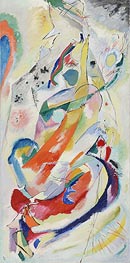
Panel for Edwin R. Campbell No. 1 1914
Oil Painting
$1055
$1055
Canvas Print
$61.81
$61.81
SKU: KAW-16080
Wassily Kandinsky
Original Size: 162.5 x 80 cm
Museum of Modern Art, New York, USA
Wassily Kandinsky
Original Size: 162.5 x 80 cm
Museum of Modern Art, New York, USA
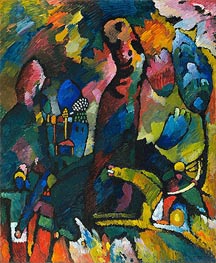
Picture with an Archer 1909
Oil Painting
$1286
$1286
Canvas Print
$76.83
$76.83
SKU: KAW-16081
Wassily Kandinsky
Original Size: 175 x 144.6 cm
Museum of Modern Art, New York, USA
Wassily Kandinsky
Original Size: 175 x 144.6 cm
Museum of Modern Art, New York, USA
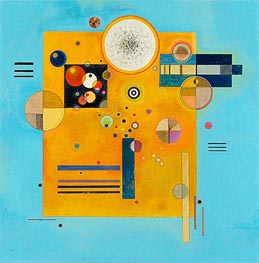
Soft Pressure 1931
Oil Painting
$1261
$1261
Canvas Print
$92.32
$92.32
SKU: KAW-16082
Wassily Kandinsky
Original Size: 99.5 x 99 cm
Museum of Modern Art, New York, USA
Wassily Kandinsky
Original Size: 99.5 x 99 cm
Museum of Modern Art, New York, USA
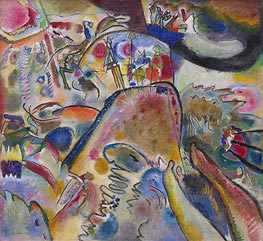
Small Pleasures 1913
Oil Painting
$1349
$1349
Canvas Print
$85.85
$85.85
SKU: KAW-16083
Wassily Kandinsky
Original Size: 110.2 x 119.4 cm
Solomon R. Guggenheim Museum, New York, USA
Wassily Kandinsky
Original Size: 110.2 x 119.4 cm
Solomon R. Guggenheim Museum, New York, USA
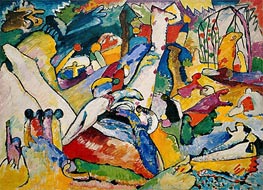
Sketch for 'Composition II' c.1909/10
Oil Painting
$1174
$1174
Canvas Print
$67.79
$67.79
SKU: KAW-16084
Wassily Kandinsky
Original Size: 97.5 x 131.2 cm
Solomon R. Guggenheim Museum, New York, USA
Wassily Kandinsky
Original Size: 97.5 x 131.2 cm
Solomon R. Guggenheim Museum, New York, USA
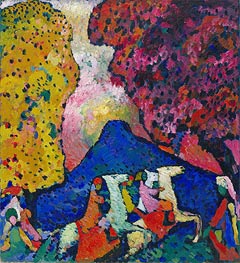
Blue Mountain c.1908/09
Oil Painting
$1163
$1163
Canvas Print
$85.51
$85.51
SKU: KAW-16085
Wassily Kandinsky
Original Size: 106 x 96.6 cm
Solomon R. Guggenheim Museum, New York, USA
Wassily Kandinsky
Original Size: 106 x 96.6 cm
Solomon R. Guggenheim Museum, New York, USA
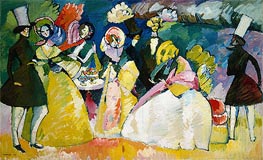
Group in Crinolines 1909
Oil Painting
$1145
$1145
Canvas Print
$61.81
$61.81
SKU: KAW-16086
Wassily Kandinsky
Original Size: 95.2 x 150 cm
Solomon R. Guggenheim Museum, New York, USA
Wassily Kandinsky
Original Size: 95.2 x 150 cm
Solomon R. Guggenheim Museum, New York, USA
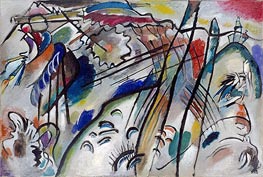
Improvisation 28 (second version) 1912
Oil Painting
$1163
$1163
Canvas Print
$63.02
$63.02
SKU: KAW-16087
Wassily Kandinsky
Original Size: 111.4 x 162 cm
Solomon R. Guggenheim Museum, New York, USA
Wassily Kandinsky
Original Size: 111.4 x 162 cm
Solomon R. Guggenheim Museum, New York, USA
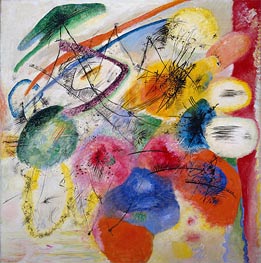
Black Lines 1913
Oil Painting
$1349
$1349
Canvas Print
$93.00
$93.00
SKU: KAW-16088
Wassily Kandinsky
Original Size: 129.4 x 131 cm
Solomon R. Guggenheim Museum, New York, USA
Wassily Kandinsky
Original Size: 129.4 x 131 cm
Solomon R. Guggenheim Museum, New York, USA
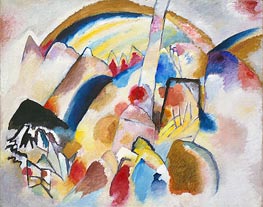
Landscape with Red Spots, No. 2 1913
Oil Painting
$1145
$1145
Canvas Print
$73.75
$73.75
SKU: KAW-16089
Wassily Kandinsky
Original Size: 117.5 x 140 cm
Solomon R. Guggenheim Museum, New York, USA
Wassily Kandinsky
Original Size: 117.5 x 140 cm
Solomon R. Guggenheim Museum, New York, USA
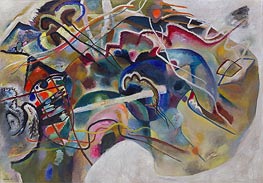
Painting with White Border 1913
Oil Painting
$1349
$1349
Canvas Print
$65.07
$65.07
SKU: KAW-16090
Wassily Kandinsky
Original Size: 140.3 x 200.3 cm
Solomon R. Guggenheim Museum, New York, USA
Wassily Kandinsky
Original Size: 140.3 x 200.3 cm
Solomon R. Guggenheim Museum, New York, USA

White Cross 1922
Oil Painting
$1172
$1172
Canvas Print
$80.57
$80.57
SKU: KAW-16091
Wassily Kandinsky
Original Size: 100.5 x 110.6 cm
Solomon R. Guggenheim Museum, New York, USA
Wassily Kandinsky
Original Size: 100.5 x 110.6 cm
Solomon R. Guggenheim Museum, New York, USA
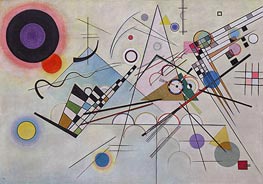
Composition 8 1923
Oil Painting
$1195
$1195
Canvas Print
$65.41
$65.41
SKU: KAW-16092
Wassily Kandinsky
Original Size: 140 x 201 cm
Solomon R. Guggenheim Museum, New York, USA
Wassily Kandinsky
Original Size: 140 x 201 cm
Solomon R. Guggenheim Museum, New York, USA
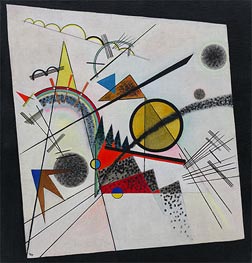
In the Black Square 1923
Oil Painting
$1191
$1191
Canvas Print
$89.77
$89.77
SKU: KAW-16093
Wassily Kandinsky
Original Size: 97.5 x 93.3 cm
Solomon R. Guggenheim Museum, New York, USA
Wassily Kandinsky
Original Size: 97.5 x 93.3 cm
Solomon R. Guggenheim Museum, New York, USA
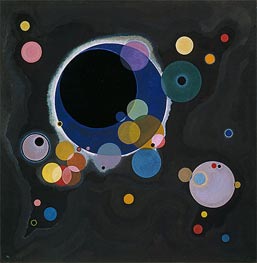
Several Circles 1926
Oil Painting
$1225
$1225
Canvas Print
$91.47
$91.47
SKU: KAW-16094
Wassily Kandinsky
Original Size: 140.3 x 140.7 cm
Solomon R. Guggenheim Museum, New York, USA
Wassily Kandinsky
Original Size: 140.3 x 140.7 cm
Solomon R. Guggenheim Museum, New York, USA
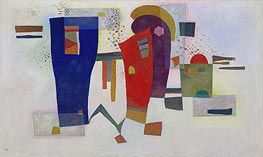
Accompanied Contrast 1935
Oil Painting
$1124
$1124
Canvas Print
$61.81
$61.81
SKU: KAW-16095
Wassily Kandinsky
Original Size: 97 x 162 cm
Solomon R. Guggenheim Museum, New York, USA
Wassily Kandinsky
Original Size: 97 x 162 cm
Solomon R. Guggenheim Museum, New York, USA
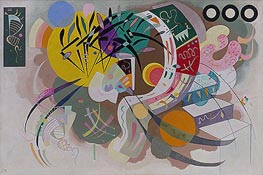
Dominant Curve 1936
Oil Painting
$1319
$1319
Canvas Print
$62.17
$62.17
SKU: KAW-16096
Wassily Kandinsky
Original Size: 129.2 x 194.3 cm
Solomon R. Guggenheim Museum, New York, USA
Wassily Kandinsky
Original Size: 129.2 x 194.3 cm
Solomon R. Guggenheim Museum, New York, USA
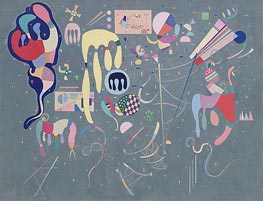
Various Actions 1941
Oil Painting
$1294
$1294
Canvas Print
$71.54
$71.54
SKU: KAW-16097
Wassily Kandinsky
Original Size: 89.2 x 116 cm
Solomon R. Guggenheim Museum, New York, USA
Wassily Kandinsky
Original Size: 89.2 x 116 cm
Solomon R. Guggenheim Museum, New York, USA